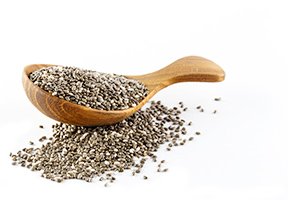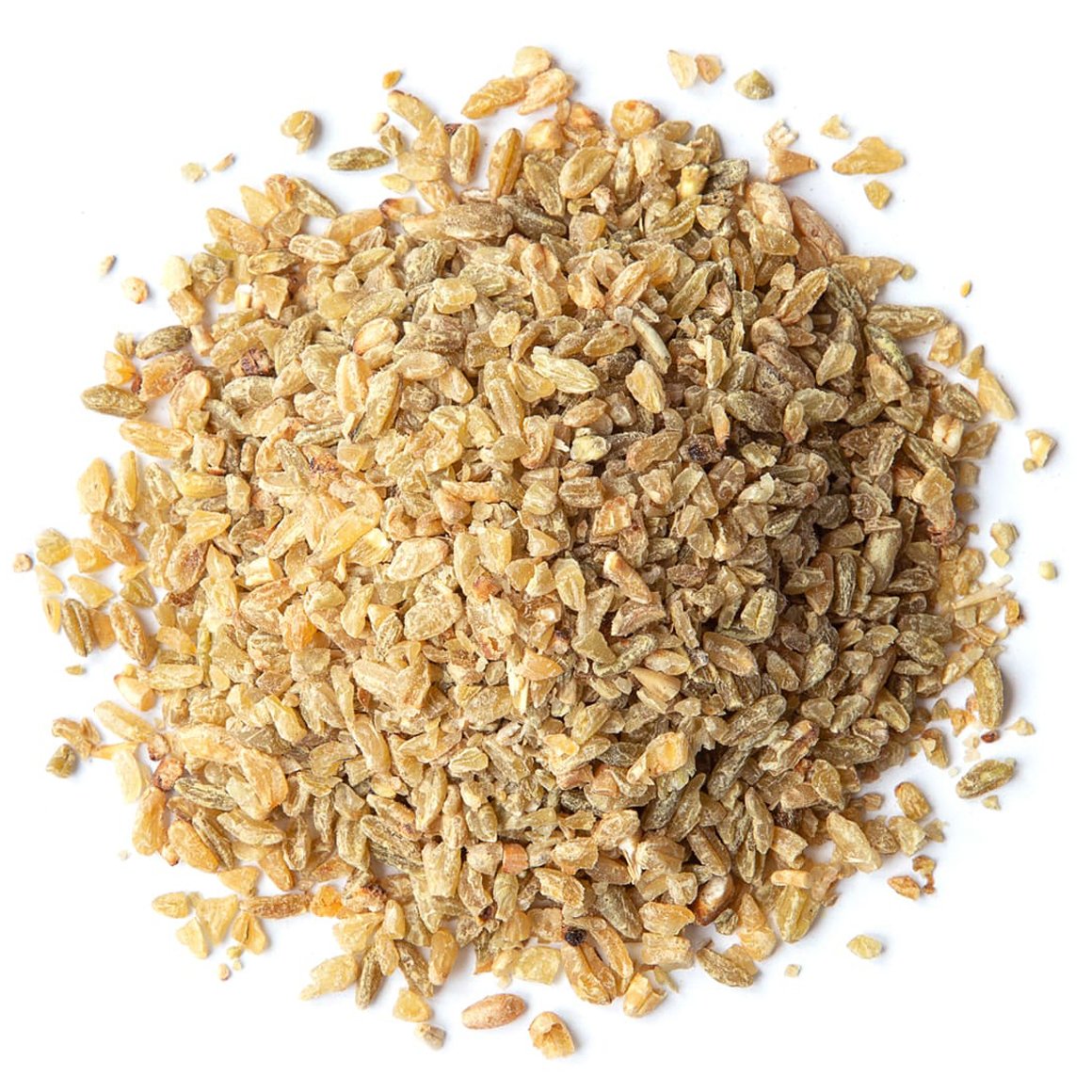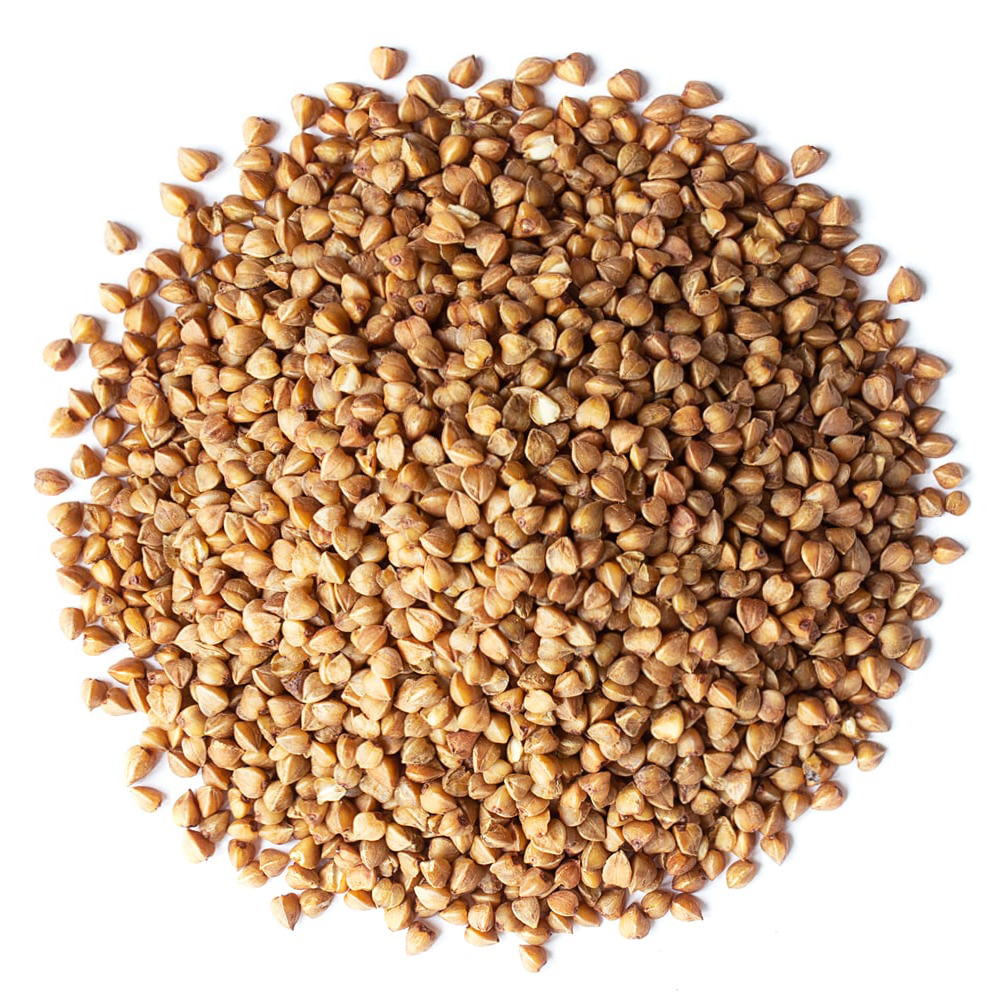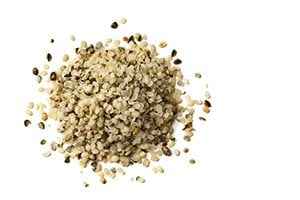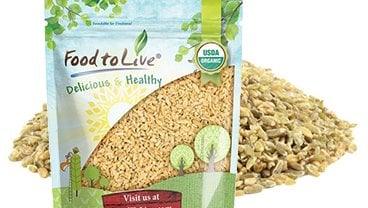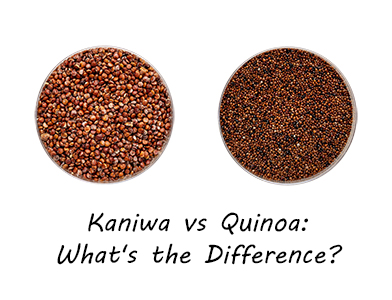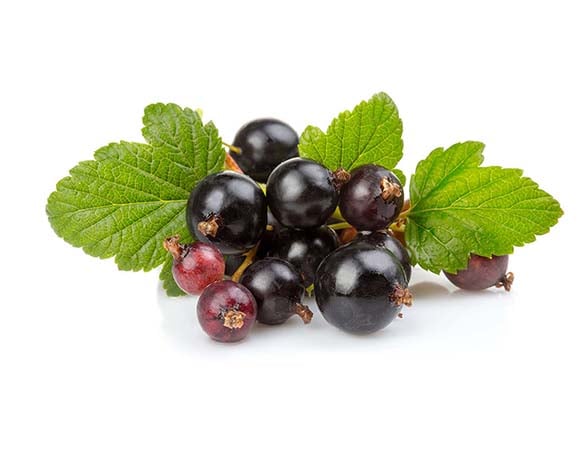July 13, 2019 · Written by Foodtolive Team
Delicious and Nutritious: Health Benefits of Freekeh
For thousands of years, people living in Northern Africa, the Mediterranean, and the Middle East have grown and consumed freekeh as a regular part of their diet. But it is just recently that this cereal-like grain is being noticed and touted as a new superfood substitute for quinoa among food bloggers and health food enthusiasts across the world. How does Freekeh compare to similar grains, or is it just a fad?

What is Freekeh
Freekeh is a type of cereal made from unripened wheat that is then roasted and crushed into small pieces. The term freekeh is actually referring to the process used to prepare grains. The grain used for freekeh is typically wheat, and usually specifically durum wheat.
It is a popular food in global cuisine, though in the last five years it has found a place in American kitchens.
If you’re tired of eating quinoa, freekeh is an excellent alternative. It is subtly smoky and nutty in flavor while having a dense yet chewy consistency that makes porridge, salad, pilafs, and soups feel heartier and more filling. Best of all, freekeh is a breeze to make and takes less than half an hour.
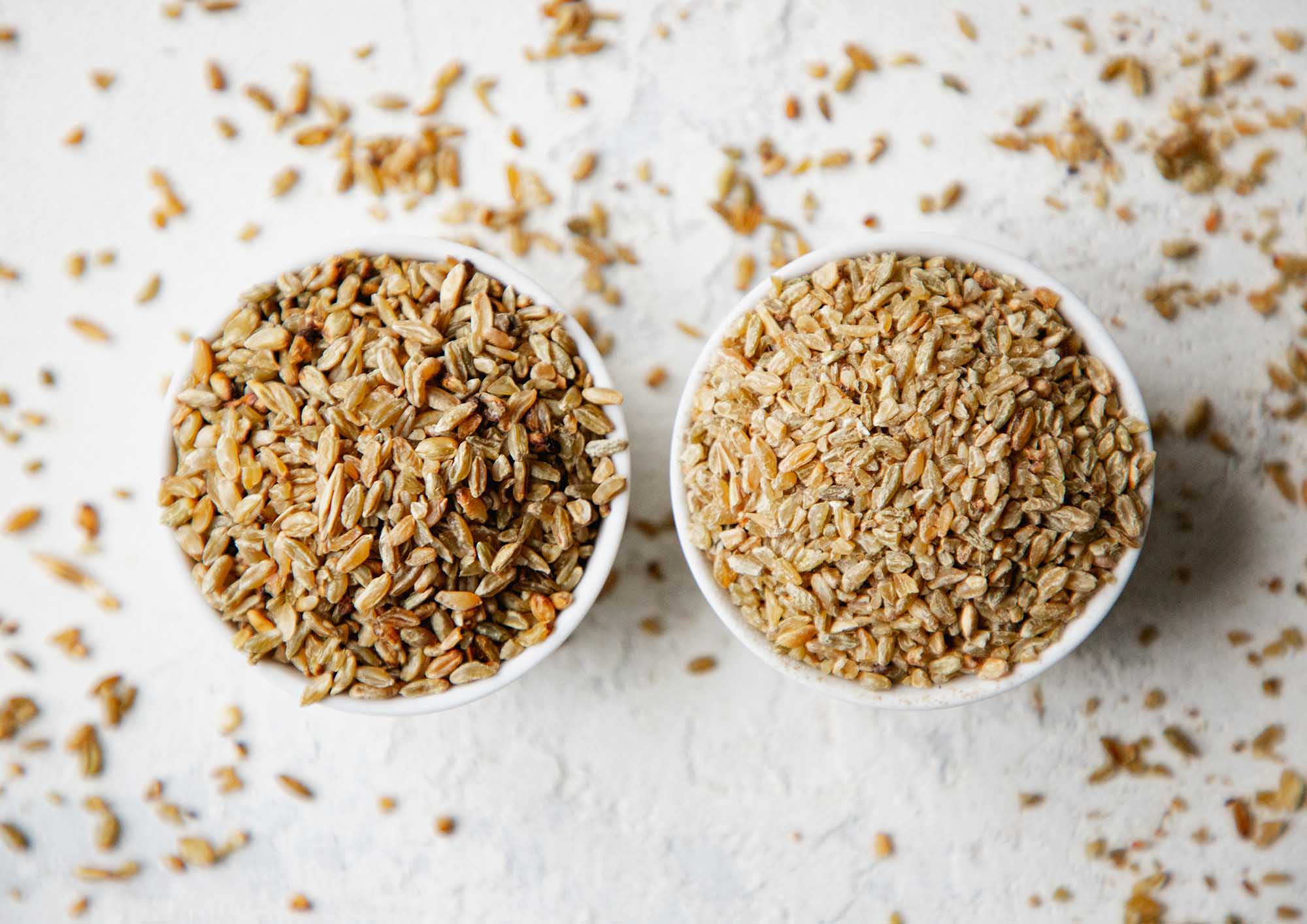
Freekeh Nutritional Info & Health Benefits
What is it about freekeh that makes it so healthy? First of all, since it is harvested while it is still “green,” or young, the grain keeps more nutrition, such as protein, fiber, and other vitamins and minerals.
Here is a breakdown of the nutrition in 3/4 of a cup of cooked freekeh:
- 170 calories
- 7 g protein
- 33 g carbs
- 8 g fiber
- 1.5 g fat
- 1 g sugar
- 20 mg of calcium
- 1.8 mg iron
- 40 mg magnesium
How do these macros compare to other ancient or whole grains? Compared to quinoa, freekeh has five more grams of fiber and one more gram of protein. And it has 6.5 grams more fiber and 3.5 grams more protein than brown rice. However, all three of these grains contain roughly the same amount of calories per serving.
Sponsored by Food to live

Besides having the right amount of nutrients to fuel your body, it has several health benefits that can improve body functions.
- Helps you become more regular. The fiber and prebiotics in freekeh stimulate a healthy digestive system by providing your gut bacteria with the nourishment it needs to break down food better. Prebiotics are different from probiotics in that prebiotics fuel probiotics. Perhaps one of the best parts about freekeh is how well it can alleviate symptoms and discomfort from diseases such as IBS, Crohn’s, and ulcerative colitis.
- Promotes weight loss. When eaten in conjunction with other healthy foods and regular exercise, organic freekeh can help you feel full over a more extended period. This is because it has lots of protein and fiber while having very little fat. Consuming foods that are high in fiber has been shown to have the best results for those who are trying to lose weight.
- It is low on the glycemic index. Foods that are low on the glycemic index are less likely to cause blood sugar spikes that will leave you feeling hungry and tired after a couple of hours. Choosing freekeh over rice, quinoa, or bread, which are all high on the glycemic index will keep that crash from happening and maintain consistent blood sugar levels.
- Improves muscle function. Freekeh has a lot of something called glutamic acid, which helps muscles grow and become stronger. Developing muscular strength helps passively burn calories and promote healthy weight loss.
- Helps protect eyes and vision. Among the other nutrients like magnesium and manganese that freekeh contains, it also is a good source of carotenoids. Carotenoids help keep eyes healthy and prevent degenerative diseases as you age.
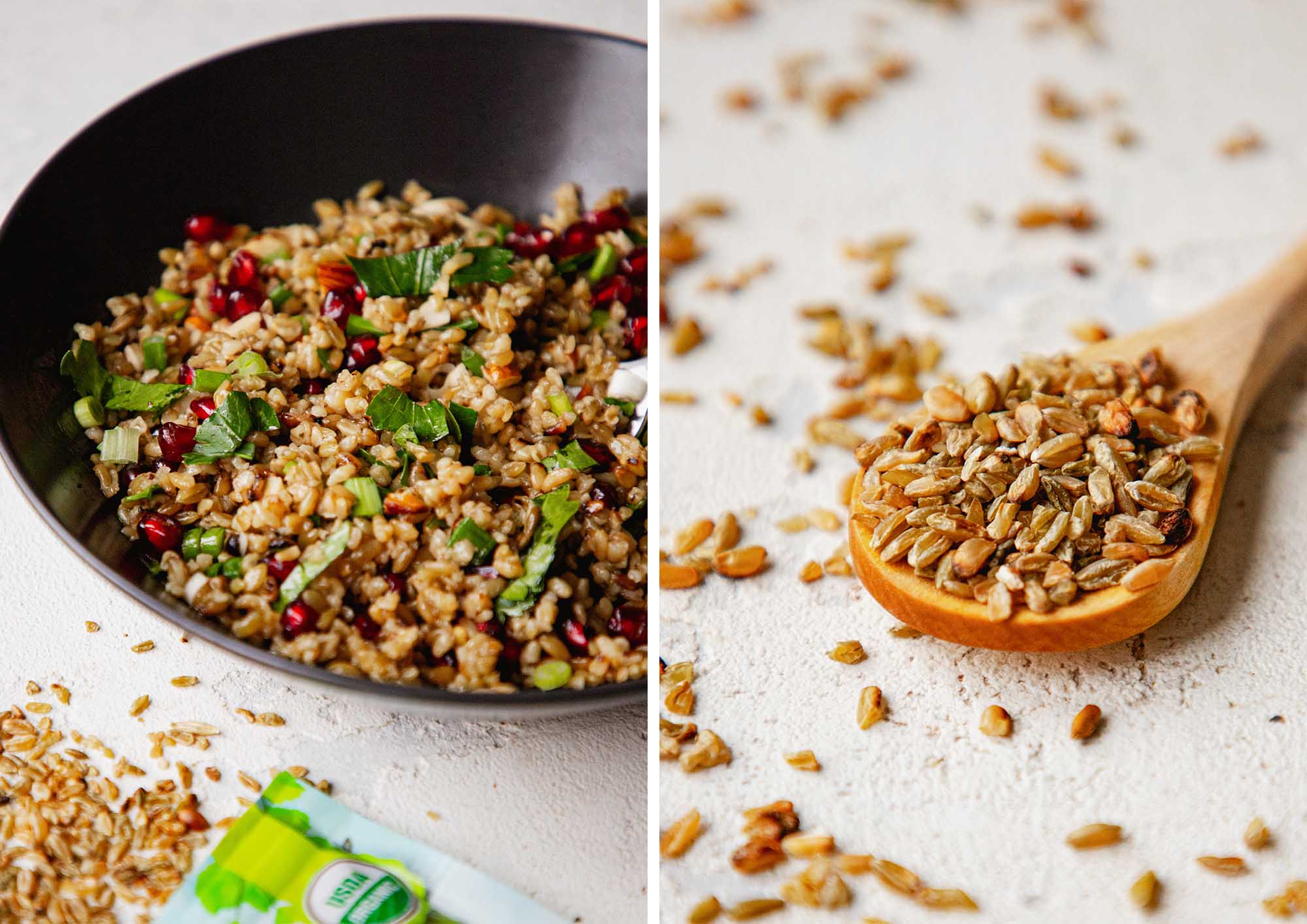
Is Freekeh Gluten Free
Gluten is the name of the protein found in many grains. Unfortunately, since freekeh is a type of wheat, it is not gluten-free. If you are on a gluten-free diet or have celiac disease, it’s best to avoid freekeh in your diet.
Grains that are gluten-free include quinoa, sorghum, and oats. Depending on the recipe, you can substitute freekeh for other gluten-free grains instead.
How to cook Freekeh
The simplicity of freekeh makes it easy to prepare and incorporate into any meal. Like any grain, the key is to keep the right ratio of water to grain and simmer time.
Here’s how to make four servings of freekeh:
First, boil 2.5 cups of water. Then, add one cup of freekeh. Simmer for 20 to 25 minutes, or until the grains soak up all the water. Fluff the freekeh with a fork before serving.
Two Simple Recipes for Freekeh
Dressed Up Freekeh
To “dress up” freekeh, try adding a drizzle of oil, lemon juice, fresh parsley, and scallions. Or, substitute freekeh for oats in yogurt parfaits, oatmeal, and other breakfast meals. Cooked freekeh is a delicious side to have with fish, in a salad, or any dish that needs a hearty grain.
Chicken Freekeh
For a filling chicken dish, try this recipe. Take a few pieces of bone-in chicken and boil it in a pot until the chicken is cooked. Next, finely chop some onions and saute them in oil in a separate pan.
Take the chicken stock from the first pot and then add the chicken. Once it’s come to a boil, add the freekeh. Continue to boil on medium heat until the freekeh is cooked. For extra chicken flavor, add a cube of chicken bouillon. Top off your plate with sauteed onions, and add salt or pepper to taste.
Next time you’re craving a new flavor in your meals, look for freekeh in the grain section of your local grocery or health food store.

